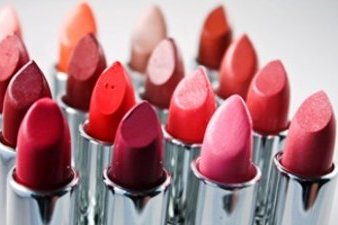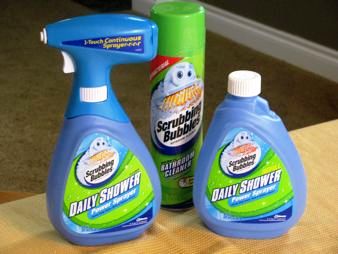- New CSE study finds mercury in fairness creams and chromium and nickel in lipsticks. Mercury is not permitted to be used in cosmetics in India – their mere presence in these products is illegal.
- India has very weak regulations and almost no enforcement, which is why some companies are getting away with flouting the law.
 New Delhi – One of India’s largest studies on the presence of heavy metals in cosmetics has emerged with a startling finding: the fairness creams – ones which are endorsed by some of our biggest Bollywood names – could contain mercury, an element which is universally recognised as extremely toxic. Lipsticks, which many of us can’t do without, may come packed with chromium, which is carcinogenic.
New Delhi – One of India’s largest studies on the presence of heavy metals in cosmetics has emerged with a startling finding: the fairness creams – ones which are endorsed by some of our biggest Bollywood names – could contain mercury, an element which is universally recognised as extremely toxic. Lipsticks, which many of us can’t do without, may come packed with chromium, which is carcinogenic.
Centre for Science and Environment’s (CSE) Pollution Monitoring Lab (PML), which did the study, says use of mercury in cosmetics is prohibited in India. PML found mercury in 44 per cent of the fairness creams it tested. It also found chromium in 50 per cent and nickel in 43 per cent of the lipstick samples it tested. The lab also tested for lead and cadmium, but did not find any.
Said CSE Director General Sunita Narain, “Mercury is not supposed to be present in cosmetic products. Their mere presence in these products is completely illegal and unlawful.”
“Additionally, the fact that our lab did not find mercury in 56 per cent of the products tested suggests that the industry has the capacity and wherewithal to clean up their act. Many companies are following the law – what is stopping the others from doing so?” she asked.
Said Chandra Bhushan, CSE Deputy Director General and Head of its Lab, “What is coming out very clearly is that this sector has extremely weak regulations and almost no enforcement of whatever laws that exist.”
CSE Study and its Findings
73 cosmetic products of four different categories were tested for heavy metals: 32 fairness creams (26 for women and six for men) were tested for mercury. 30 lipsticks, 8 lip balms and 3 anti-ageing creams were tested for lead, cadmium, chromium and nickel. The samples included Indian and international cosmetic brands along with a few herbal products. The results:
a. Fairness Creams
- Mercury was found in 14 fairness creams tested by CSE in the range of 0.10 parts per million (ppm) to 1.97 ppm. Under the Drugs and Cosmetics Acts and Rules of India, Mercury is banned for use in cosmetics. Their presence in these products indicates that they are not meeting the law.
- Aroma Magic Fair Lotion, a product of Blossom Kochhar Beauty Products Pvt. Ltd., had the highest mercury level at 1.97 ppm, followed by Olay Natural White (1.79 ppm), a product of Procter and Gamble, India, and Ponds White Beauty Cream (1.36 ppm) of Hindustan Unilever Ltd.
b. Lipsticks
- Chromium was found in 15 out of 30 lipsticks tested in the range of 0.45 ppm to 17.83 ppm. Hearts & Tarts (080V) shade of ColorBar had the highest concentration.
- Nickel was found in 13 out of 30 products tested in the range of 0.57 to 9.18 ppm, with Lancôme ‘L’Absolu’ Nu-204 of L’Oreal India Pvt. Ltd. containing the highest concentration.
CSE did not find any heavy metals in anti-aging creams and lip balms. It also didn’t detect lead and cadmium in lipsticks.
To gauge the safety of cosmetic products it tested, CSE compared the levels of heavy metals found with their Acceptable Daily Intake (ADI) limits. ADI is the maximum amount of a toxin that a person can be exposed to over a lifetime without any appreciable health risk. Since India has not set limits for ADI of mercury, CSE compared the amount of mercury in fairness creams with the ADI set by the U.S. Environmental Protection Agency (US EPA).
The results show whitening creams may contribute up to 71 per cent of the ADI for mercury, depending upon the product and the amount of the fairness cream used. This is a very high level of exposure to mercury from just one product. People are regularly exposed to the heavy metal from sources such as food, water and air.
With some whitening cream accounting for over 50 per cent of the ADI for mercury, chances are high that a person using these products may exceed the ADI limit for mercury. Health risks associated with mercury would increase proportionally.
Mercury is a neurotoxin. Inorganic mercury that is present in fairness creams can damage kidneys and may cause rashes, skin discolouration and scarring. It can also cause anxiety, depression, psychosis and peripheral neuropathy.
In case of chromium, the amounts found by CSE in lipsticks was very high compared to the ADI. For a heavy user, 13 out of 30 lipsticks tested by CSE would cross the ADI. Lipstick with highest level of chromium would expose a heavy user to over 15 times the safety limit. Hexavalent chromium (CrVI), one of the forms in which chromium is present, is known to cause cancer in humans.
CSE Approached Companies for Clarification
CSE approached all companies with the test results of their products. Seven out of 14 companies responded. None disputed CSE’s findings. However, most took refuge in the concept of ‘trace’ presence. Their defense is that the heavy metal found is small in quantity and it is unavoidable because it is part of the ingredients. They also claimed that their product is safe for long term use. CSE’s study shows that it is certainly avoidable as mercury is not found in more than half of fairness creams and 40% of lipsticks do not have chromium or nickel. On the other hand, the levels at which CSE found chromium in some products is exposing the consumers to well above the ADI of chromium.
The Regulatory Gaps
Extremely weak and ineffective – this is how regulatory control over the cosmetics industry can be explained as. In India, limits are set only for few heavy metals and that too in colourants – an ingredient used in cosmetics. Colourants make up 10 per cent of the weight of a lipstick, and are one of the sources of heavy metals. There are no limits for finished products – which makes it difficult to monitor. Over and above, none of these products are tested by regulators. As is the case with the presence of mercury in fairness creams.
Says Chandra Bhushan, “Manufacturers often get away on the pretext that toxic metals are present in trace levels. It is important that regulators set limits for final products and enforce them.”
Check the following link for Full Study Results and Infopackage:
http://www.cseindia.org/node/5279
Source: CSE.















